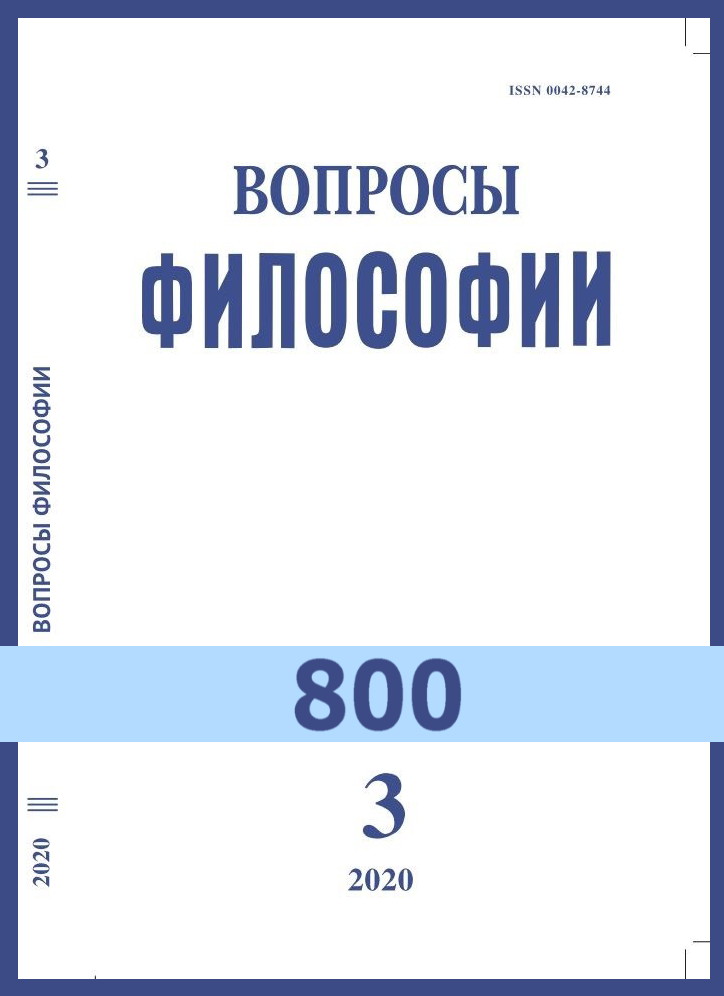Ontological Gestures and Images of the Revolution
DOI:
https://doi.org/10.21146/0042-8744-2020-3-75-87Keywords:
revolution, ground, cause, gods, nature, overthrow, conquest, deliverance, justice, injusticeAbstract
The metaphysical layer of the revolution, namely its strategy regarding the gods and nature is being observed. A look at the very revolutionary element focuses in the projection of its causes and grounds, emphatically distinguished. In accordance with the internal logic of the revolution, as a philosophical assist of reasoning, as initial, the existentialist thesis of Albert Camus and, methodologically, Hegelian dialectical immanentism are taken, free, if possible, from a panlogist complacency. Hegelianism is contrasted with critically interpreted Kant’s transcendentalism, and with it, and as such, the strategy of “coordination” of intelligibility and religiosity. In the same critical vein the creative evolution of Herbert Marcuse is interpreted, rolling from the protection of Hegelianism to the support of Kant’s ideas. To the discussion of the title problem of article is attracted the theoretical work of Michael Agursky and Vladimir Kormer, devoted, respectively, to the analysis of the ideology of National Bolshevism and double consciousness of the intelligentsia. The author matches the imposed philosophical arguments with the literary and artistic, represented, in particular, in the texts of Alexander Blok, Pimen Karpov and Andrei Platonov

